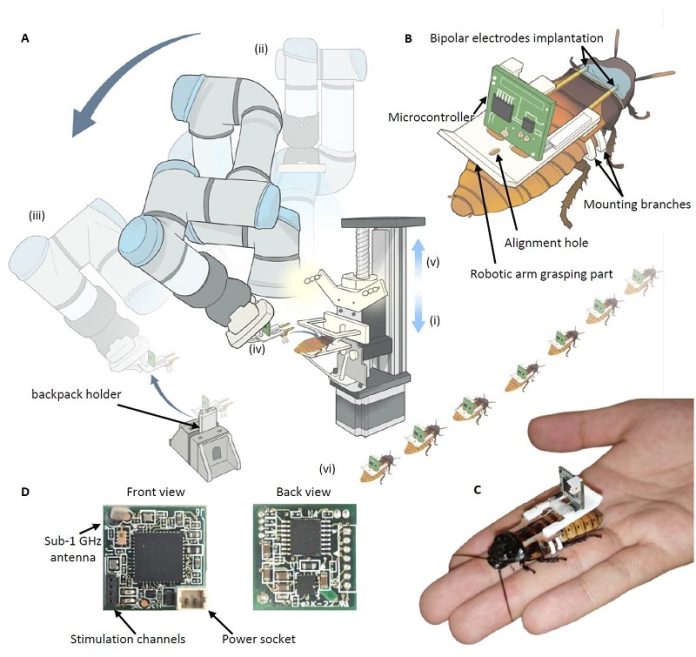
Scientists at Nanyang Technological University (NTU) in Singapore have created the world’s first robot-powered assembly line for making “cyborg insects”—real cockroaches fitted with tiny electronic backpacks that turn them into mini search-and-rescue robots.
This invention could be a game-changer in helping find people trapped in disaster zones.
Led by Professor Hirotaka Sato from NTU’s School of Mechanical and Aerospace Engineering, the team built a robotic system that quickly and accurately attaches the control devices onto Madagascar hissing cockroaches.
The process only takes about 1 minute and 8 seconds per insect—around 60 times faster than when done by hand, which can take over an hour. When four cockroaches were processed, the system finished the job in under eight minutes—about 30 times faster than before.
Prof Sato explained that this new system could make it easier to prepare large numbers of these insect-robots quickly and reliably, especially in urgent situations like earthquakes or building collapses.
The electronic backpack can be removed safely when not in use, causing no harm to the insect.
These cyborg insects walk using their natural legs, but scientists can control their movement by sending small electric signals through electrodes implanted in their bodies. A tiny circuit board on their back makes this possible.
Using artificial intelligence and a special algorithm, the robot assembly line identifies the best spot to place the electrodes, ensuring precise control.
The team also improved the backpack’s design to use 25% less power than earlier versions. This makes the cyborgs more energy efficient, reducing the chance of overstimulation and extending their active time in the field.
In lab tests, the cockroach robots were able to make sharp turns and slow down when commanded. A small group of four roaches managed to explore over 80% of a cluttered test area in just 10.5 minutes, showing how well they can move through tight and complex spaces.
Though the automated assembly line is still in its early stages, manually-prepared cyborg insects have already been used in real emergencies. On March 30, 2025, ten of these insects were sent to Myanmar with Singapore’s Civil Defense Force after a deadly 7.7-magnitude earthquake.
This marked the first time cyborg insects were used in a humanitarian mission, helping rescuers reach places that machines couldn’t.
Looking forward, Prof Sato’s team wants to refine the system and partner with others to prepare for industrial-scale production. With further development, these tiny robots could also be used to inspect bridges, tunnels, and other large structures for safety.



